In 2023, when I designed the Boodles British Craft Garden, I made a valiant attempt to introduce the word craftspersonship into my spiel—keen to be as correct as possible in this age of linguistic landmines. But let's be honest, it never quite felt right rolling off the tongue. However, the more I dug into it, the more I realised that the 'man' in craftsmanship has nothing to do with gender and everything to do with Old English, where mann simply meant 'human.' The word has always been about skill, patience, and the kind of mastery that makes the heart swell with admiration. So, this year, we're sticking with craftsmanship and craftsperson, and we'll see how that goes. The vocabulary vigilantes of the modern age may clutch their inclusive dictionaries in horror, but they'll have to do it somewhere else.
For the Hospice UK Garden of Compassion, I've had the privilege of working with some of the finest craftspeople in Britain—makers who transform raw materials into things of beauty and function. Their work, from artfully placed dry stone walls to steam-bent benches and naturally-bonded water bowls, is as much a part of this garden as the plants themselves. This is a garden with soul, and that soul is stitched together with human hands, not computer code.
A Protest in Plant Form
We live in an age of relentless technological overwhelm, where AI churns out generic buildings, disposable art, and hollow prose at the click of a button. This garden stands defiant—a green (two)-fingered rebellion against the digitally sanitised world. It's a celebration of hands—calloused, skilled, stubborn hands—that know their craft inside out. It's a rebellion against the disposable, against the algorithmically generated, against the notion that efficiency deserves to trump artistry.
Over a century ago, William Morris and his band of Arts and Crafts revolutionaries waged a war against the soulless mechanisation of design. They rejected the churn of mass production in favour of work that bore the touch of the maker. And here we are again, at another crossroads, where the digital threatens to swallow the physical whole. The rise of digital perfection presents the same challenge: do we prioritise speed over soul, or do we fight for the masterfully conjured, the meticulously shaped, the quietly magnificent?
This garden stands firmly with Morris, its roots tangled happily in his rebellion. Machines can generate ideas, but they don't feel the weight of a hammer in their hands, they don't inhale the scent of steaming wood as it bends, they don't run their fingers across a freshly applied clay finish and instinctively know when it's right. They don't run a hand along the steam-bent bench, or watch how the light plays over the water bowl, or feel the timeless connection woven into the dry stone wall. They don't stand in this landscape, breathe in its rhythm, and truly understand it.
Craftsmanship is a refusal to let the human touch become obsolete. It's about materials that endure and gather history, not degrade; about skills passed down through generations, not downloaded from an algorithm. This garden dares you to slow down and bask in the work of human hands—to sit on a bench bent into form by heat and time rather than churned out by the cold efficiency of a machine. In a world hell-bent on automation, it's a reminder that the magic lies in the authentic, the storied, the human-made.
anniega.com
A Legacy of Craftsmanship at Chelsea
In 2023, my Boodles British Craft Garden at Chelsea was a love letter to British craftsmanship, a collaboration between interior designer Rachel Chudley, Cox London, and a host of skilled artisans. Boodles, the epitome of artistry in fine jewellery, crafting each piece with an unparalleled dedication to detail and quality, inspired the exquisite details that defined this garden. It had the feel of a Pre-Raphaelite painting, with its rich textures and layered details. At its heart stood a five-metre-tall arbour, each hammered magnolia leaf painstakingly crafted by Cox London's metalworkers. The water feature, inspired by the Boodles Raindance Ring, Rippled like liquid jewellery. Everywhere you looked, craftsmanship whispered its presence.
This year, I'm carrying that tradition forward, but with a team of extraordinary makers who are redefining what it means to create by hand.
anniega.com
Mark Tungate: Steam-Bending Tradition into Contemporary Design
In a small workshop tucked away in deepest rural Devon, Mark Tungate is keeping an ancient craft alive, blending traditional steam-bending techniques with modern design. For the Hospice UK Garden of Compassion, Mark is crafting custom benches using wind-felled oak from the northeast—a material with its own story of resilience and renewal.
Steam-bending is a rare and meticulous skill. The process involves heating wood with steam until it becomes pliable, allowing it to be bent into organic, flowing shapes without breaking. It's a practice that requires patience, precision, and a deep understanding of the material. No two pieces of wood behave exactly the same way, meaning each bench is truly one of a kind, shaped as much by the character of the oak as by Mark's expertise.
The result is more than just seating; these benches are functional sculptures, their soft curves and fluid lines creating a harmonious dialogue with the garden's naturalistic planting. They offer places of rest and reflection while reinforcing the garden's narrative of craftsmanship and connection to nature.
By using wind-felled oak, Mark is also embracing the philosophy of sustainability that runs throughout the garden. These trees, felled by natural forces, are given a second life—transformed into something beautiful and enduring. It's a subtle nod to the "make do and mend" culture that resonates with the garden's ethos, where nothing is wasted, and every element is imbued with meaning.
Thea Thompson: Reviving an Ancient Technique for Modern Sustainability
In her Sussex studios, Thea Thompson stands as a guardian of nearly forgotten knowledge, breathing new life into ancient techniques. Her cement-free water bowls for the Hospice UK Garden of Compassion represent a perfect synthesis of historical wisdom and contemporary environmental consciousness.
The bowls appear deceptively simple—sculptural vessels that hold water with an organic grace—but their creation involves a complex process that few artisans have mastered. Eschewing modern cement and synthetic bonding agents, Thea works with natural materials, using techniques that have been passed down through generations but have nearly vanished from contemporary craft. Her hands mix clay, sand, and natural binding agents such as ground oyster shells from the Northeast, in proportions that feel right through touch, creating a material that will weather gracefully without harm.
Each bowl begins as a vision that responds to the specific environment where it will live. For the Hospice UK garden, Thea has crafted forms that echo the undulating rocky landscape of Mediterranean, their subtle contours designed to catch light and create gentle reflections on the water's surface. The material itself—a warm, earthy mixture that holds the memory of her fingers—creates a visual connection with the garden's dry stone walls and boulders.
The sustainability of Thea's approach isn't simply a modern overlay on an ancient craft; it's inherent to the tradition itself. In an age before mass production and global supply chains, craftspeople worked with what the earth provided, creating objects that would endure through generations without depleting resources. By reviving these techniques, Thea offers not just beautiful objects, but a different way of thinking about our relationship with materials and time.
In the garden, her water bowls serve as quiet focal points for contemplation, their still surfaces inviting reflection both literal and metaphorical. They are vessels not just for water, but for the garden's central themes of compassion and connection—a reminder that even the most functional elements can be transformed through craft into objects of beauty and meaning.
Tom Trouton: The Timeless Art of Dry Stone Walling
Along the undulating lines of the Hospice UK Garden of Compassion, Tom Trouton's dry stone walls stand as monuments to an ancient craft that has shaped landscapes across Britain for millennia. These structures, built without mortar and held together by nothing more than gravity and the skilled placement of stone against stone, represent one of the oldest continuous crafts still practised today.
Tom approaches his walls not as constructed elements but as geological works of art—each stone carefully selected and positioned in conversation with those around it. His process begins with sourcing, where he seeks out stones with the right character and shape, stones that speak to him of their potential place in the wall. Forgive me Tom on the correct terminology - you did try and teach me: some will become foundation stones, bearing the weight of all that comes above; others will be the binding stones that tie the wall together; and still others will form the distinctive coping stones that crown the wall's top.
For the Hospice UK garden, Tom has chosen Dolomitic limestone from County Durham that mimic that of the walls found in Mediterranean landscapes, their warm grey colours and textures evoking hillsides where dry stone techniques have been used since ancient times. Each piece bears the marks of geological time—striations, lichens, and weather patterns that bring their own stories to the garden. Working without templates or mechanical aids, Tom reads each stone's unique qualities, finding its natural place in the growing structure.
The walls serve multiple purposes within the garden design. They create gentle transitions between the rooms, offering both physical support for plantings and visual anchoring for the eye. In places, they incorporate deliberate gaps and niches that become micro-habitats for plants and insects, bringing additional life into the garden. Their rough textures catch the changing light throughout the day, creating shadows and highlights that shift with the sun's movement.
There is a meditative quality to Tom's craft that resonates deeply with the garden's themes. The patience required to find just the right stone, to test its fit and stability, to build something that will stand for generations—this mirrors the care and presence that defines hospice work. His walls, like compassionate care, are built stone by stone, moment by moment, with attention to both strength and beauty.
Rachel Chudley: Infusing Mediterranean Warmth Through Colour and Materiality
The ambiance of a space is profoundly influenced by its colour palette and the materials chosen. Rachel Chudley, a distinguished interior designer based in London, is renowned for her imaginative use of colour and texture, creating environments that are both vibrant and harmonious. Her approach often involves developing bespoke paint colours, a practice she honed under the mentorship of master colourist Donald Kaufman. Together, they have crafted a unique range of paints that enrich and shape interior projects, infusing spaces with a luminous and dynamic quality.
For the Hospice UK Garden of Compassion, Rachel has meticulously curated a colour palette that evokes the warmth and serenity of the Mediterranean. Drawing inspiration from the region's natural landscapes, she has selected hues that reflect the earthy tones of sunbaked terrains, the soft blues of the sea, and the vibrant greens of flora. More specifically, she is working together with Guy Valentine to develop pigments for the clay render that mimic the distinctive bark of Pinus pinea, the fiery hues of Mediterranean sunsets, and the rich ferrous soils of the region—all distilled into unique colours that capture the essence of these Mediterranean elements.
This thoughtfully developed palette not only enhances the garden's visual appeal but also fosters a sense of tranquillity and reflection, aligning with the garden's overarching theme of compassion. The colours become almost tactile elements themselves, transforming surfaces into evocations of place and memory.
Rachel's expertise ensures that each element within the garden is thoughtfully integrated, from the colour of the dry stone walls to the finishes on the steam-bent benches. Her collaboration with artisans and craftsmen ensures a cohesive design that celebrates British craftsmanship while transporting visitors to a Mediterranean haven. Through her visionary design, the garden becomes a sanctuary where colour and materiality converge to create an immersive and restorative experience.
Guy Valentine: Master of Clay, Texture, and Atmosphere
Craftsmanship is often thought of in terms of stone, wood, or metal—but surfaces themselves can be crafted with just as much artistry. Guy Valentine is a master of working with clay, using his skill to create textured, atmospheric finishes that transform spaces. His work is about more than aesthetics; it is about how materials interact with light, how they feel under hand, and how they shape our experience of a place.
Clay is one of the oldest and most versatile building materials, offering warmth, depth, and a connection to the earth. Guy's expertise spans a vast range of techniques—embossed, debossed, carved, and undulated finishes—that allow walls and surfaces to become dynamic, living elements of a design. His work sits at the intersection of sculpture and architecture, where surfaces are no longer flat backdrops but integral to the sensory experience of a space.
For the Hospice UK Garden of Compassion, Guy's work brings a layer of texture and tactility that reinforces the garden's themes of connection, navigation and reflection. Just as dry stone walling allows the landscape to breathe, his clay finishes create surfaces that feel organic and responsive, catching the light at different times of day and adding subtle depth to the overall composition. His craft is a reminder that gardens are not just visual spaces—they are places to be felt, where every material contributes to the atmosphere.
In a world where smooth, mass-produced surfaces dominate, Guy's work stands as a testament to the power of the handmade. His ability to shape clay into something that feels both raw and refined brings an irreplaceable authenticity to the garden—one that can only come from years of skill, intuition, and mastery of his craft.
Mark Whyman: The Landscape Craftsman Bringing Vision to Life
In the realm of garden creation, there exists a crucial role that too often goes unsung—that of the landscape contractor who transforms design concepts into living, breathing reality. Mark Whyman of Mark Whyman Landscapes represents the pinnacle of this craft, bringing to the Hospice UK Garden of Compassion a level of expertise and attention to detail that elevates the entire project. With 17 years of experience building gardens at Chelsea Flower Show, Mark brings an unparalleled wealth of knowledge about the unique challenges and opportunities that this prestigious event presents.
The work of a landscape contractor is not merely about following plans; it is about reading between the lines of a designer's vision, anticipating challenges, and finding solutions that honour both the concept and the practical constraints of the site. Mark's approach to this garden embodies the same dedication to craft that defines the other artisans involved, but his canvas is the entirety of the space—the subtle accessible for all levels of the terrain, the precise placement of each structural element, the careful integration of planting schemes with hardscape features.
There is a particular alchemy in constructing a show garden, especially one with the ambition and complexity of the Hospice UK Garden of Compassion. Mark's expertise lies in the precision construction of the garden's structural elements and hardscaping—the foundations upon which everything else rests. His meticulous attention to level, scale, and proportion ensures that walls stand true, paths flow naturally, and every constructed element meets with perfect alignment. This precision construction requires not just technical skill but a craftsman's eye for detail and a deep understanding of materials and their interplay with the garden's design.
The discipline of landscape contracting demands a rare combination of skills: the precision of an engineer, the material knowledge of a builder, the plant wisdom of a horticulturist, and the eye of an artist. Mark orchestrates this complex dance of elements with a maestro's touch, coordinating the timing of each craftsperson's contribution and ensuring that the whole becomes greater than the sum of its parts. His work provides the essential foundation upon which the other crafts can shine.
At Chelsea, where gardens must appear established and mature despite being constructed in 19 days, Mark's craft becomes even more crucial. The placement of each stone in Tom's walls, the setting for Thea's water bowls, the footings for Mark Tungate's benches—all must be executed with millimetre precision while maintaining the organic, naturalistic feel that defines the garden's aesthetic. This balance between technical perfection and artistic sensitivity is the hallmark of true landscape craftsmanship.
In many ways, Mark's work epitomises the garden's central message about the value of the human touch. While machines might move earth more quickly, they cannot read a site with the sensitivity of an experienced landscape craftsman—cannot feel how water will drain across a surface, how light will play on a planting, how visitors will experience the journey through the space. These subtle human judgements, refined through years of practice, are what transform a collection of elements into a coherent, emotionally resonant landscape.
Honouring the Makers
At its heart, craftsmanship is about care. Every carved surface, every steam-bent plank of oak, every hand-placed stone in this garden carries the imprint of its maker—just as every moment of care in a hospice carries the imprint of those who give it. Both are acts of dedication, of skill honed through experience, of deep human connection.
A hospice garden, like a well-made object, is crafted with love and attention. It is designed not just for accessible-for-all function but for feeling, for presence, for dignity. In an age where machines theraten to replace human hands, this garden stands as a defiant reminder: the most beautiful, meaningful things in life are still made, not manufactured. And, just like in end-of-life care, the true magic is not in the materials themselves, but in the hands that shape them.
So, when you visit Chelsea this year, take a moment. Run your hand along a bench's curve, trace the rough edge of a stone wall, let your fingertips skim the surface of a water bowl. Because in those details, you'll find something rare, something irreplaceable.
You'll find the human touch—the last true luxury in a world gone mad for the machine-made.

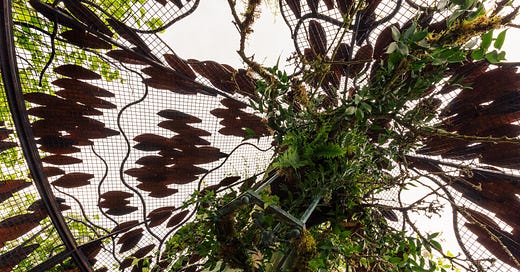





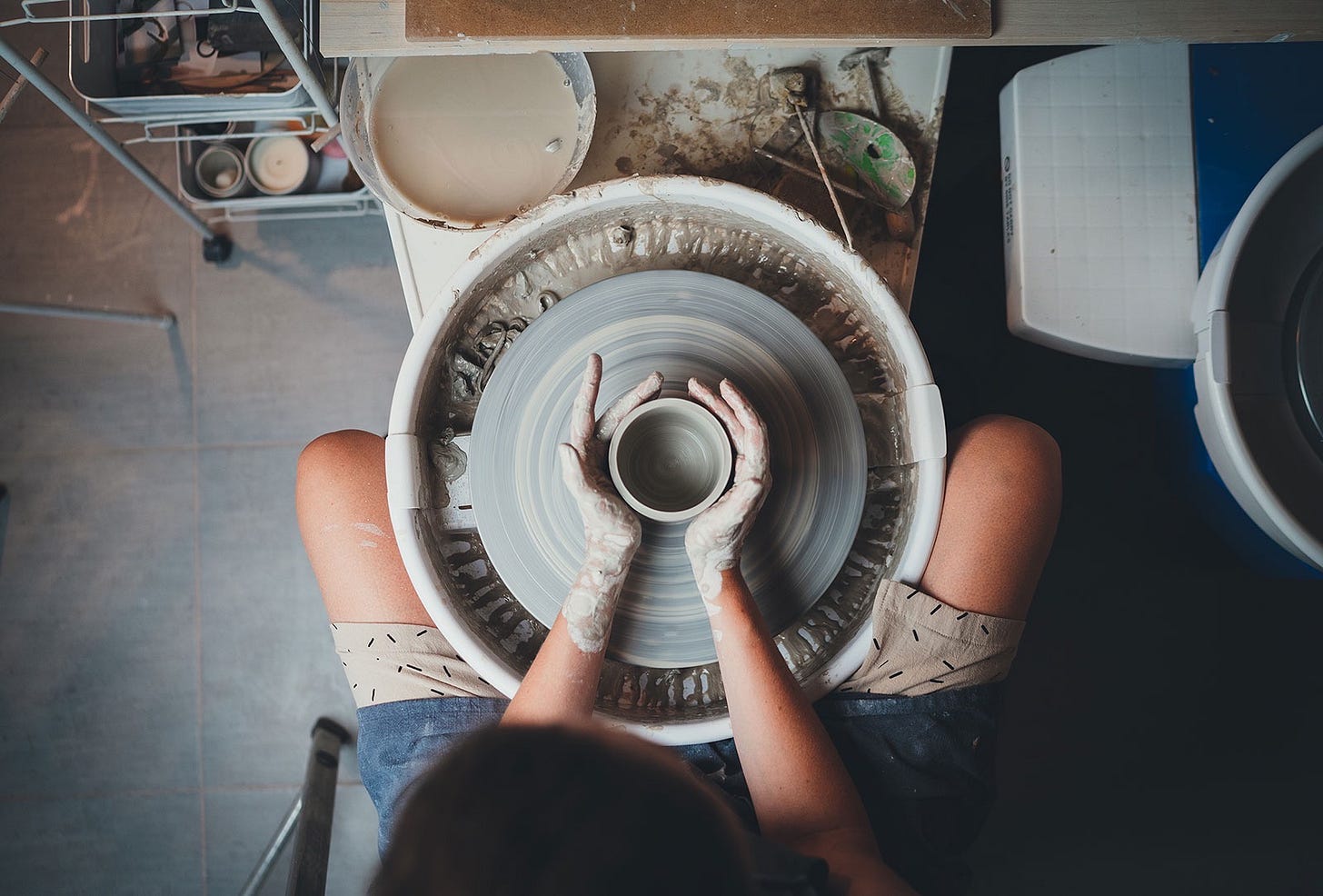
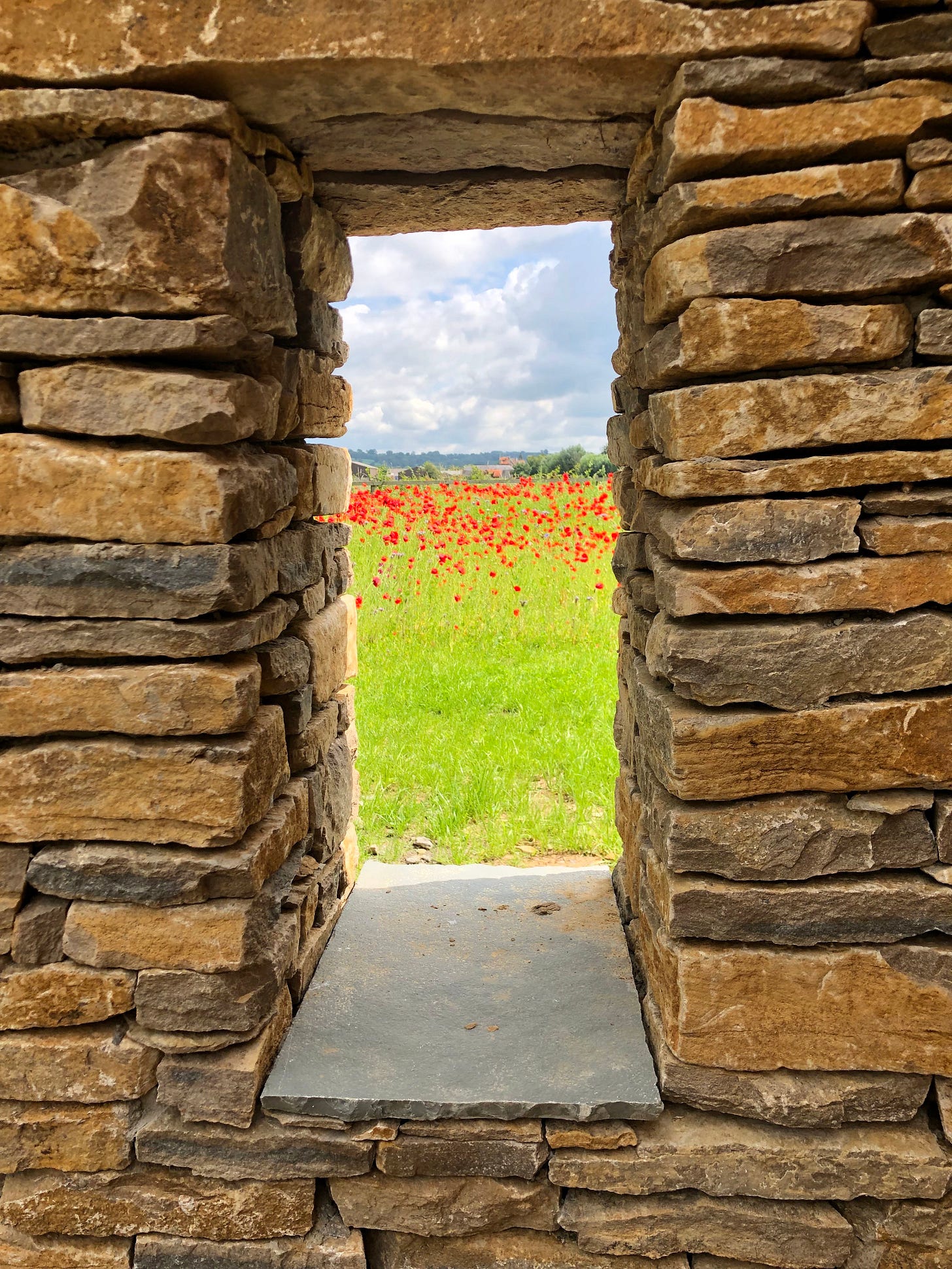
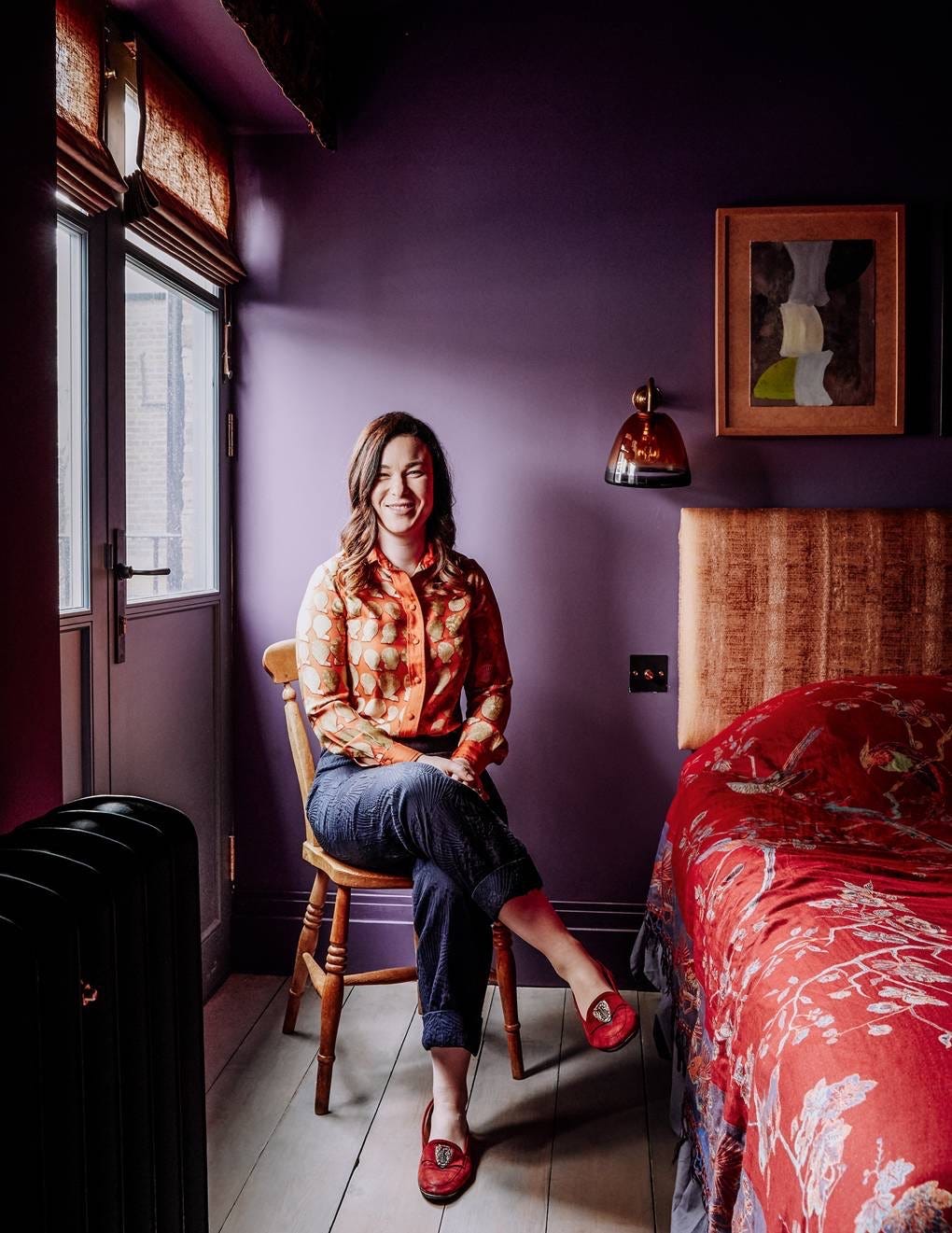
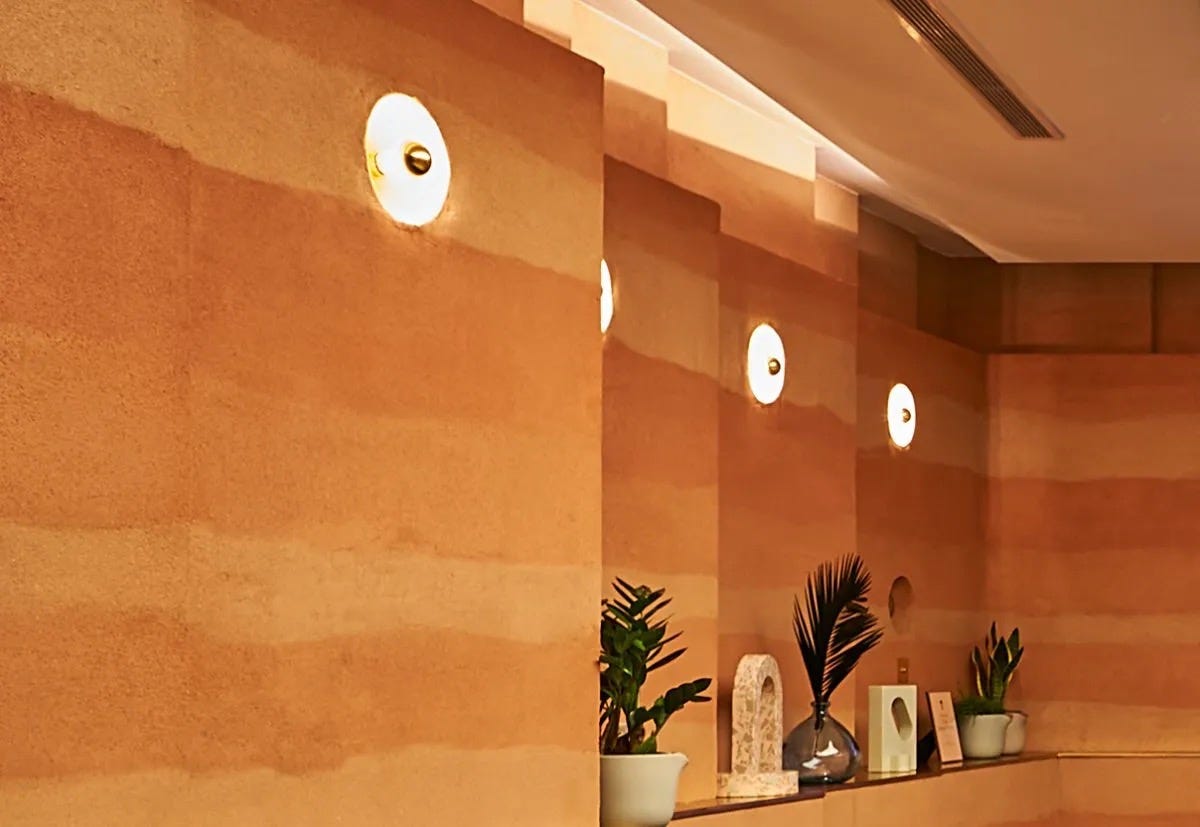
Thank you for sharing what is behind your design and ideas. I am going to Chelsea and certainly will run my hand along the bench (if I get to get in there!) Good Luck Tom